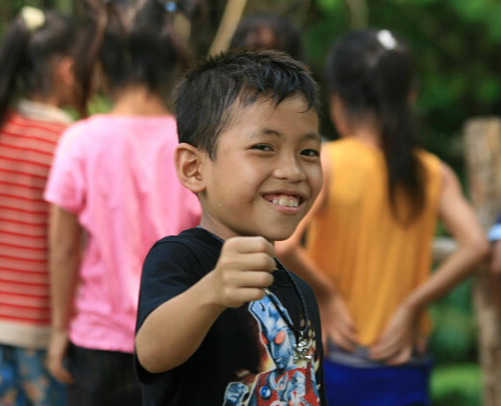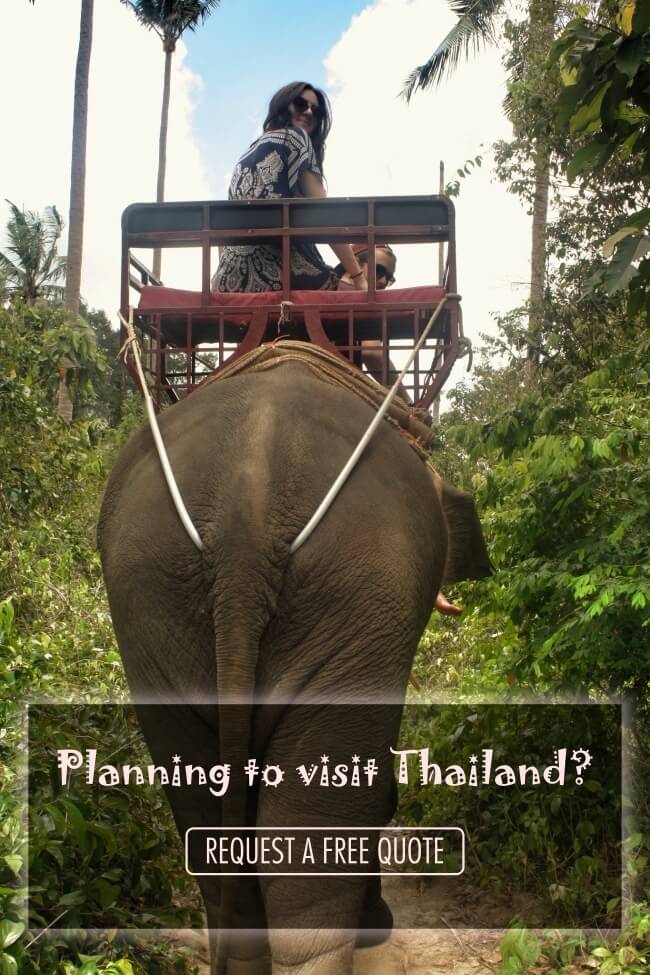Roi Et refers to both a province and a city of the same name in northeast Thailand. This city is smaller than some other metropolitan centers like Bangkok but has no shortage of Thai culture and history. From the city’s unique temples to its vibrant festivals, Roi Et is someplace any traveler passing through this region of Thailand should not miss. Read on to learn more about the best things to do in the area!
1. Somdet Phra Srinagarindra Park and Bueng Phalan Chai lake
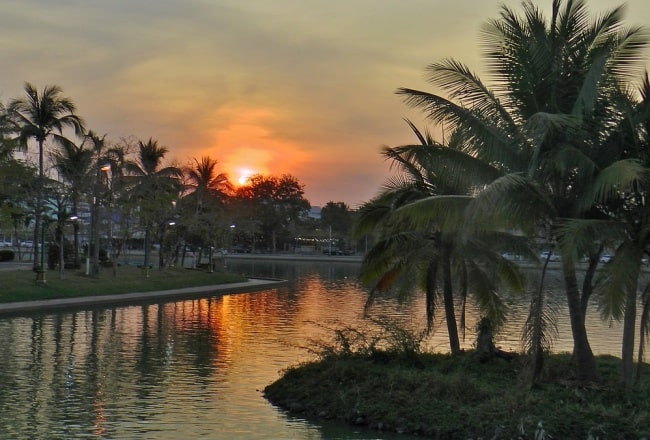
The heart of Roi Et is the beautiful park and lake, which is the hub of the city’s activity. All of Roi Et’s gatherings and festivals are centered here and it is a symbol of the larger province. Even if there is not a major event going on, it is worth spending an afternoon walking around the park’s lush flower gardens. Keep an eye out for the white clock tower, public library, and City Pillar Shrine. There is also a zoo and children’s playground. The Bueng Phalan Chai lake is connected to the park and is a peaceful respite from the hustle of the city. The lake contains a waterfall and visitors can paddle around in a rowboat. At the center of the lake is an island with a large gold walking Buddha statue which catches the eye throughout the rest of the city.
2. Roi Et National Museum
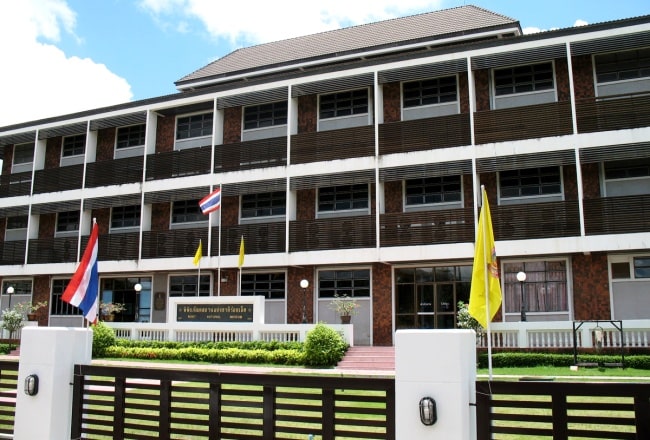
The best way to learn more about the Roi Et city and province is by stopping in the Roi Et National Museum. It contains exhibits about the natural and cultural history of the area, and gives visitors context of the present day-to-day life in Roi Et. The museum is divided into sections which focus on the geography and geology of the area; a historical section with models and dioramas of past events, including the influence of the Khmer on the area.
Originally, the building was a textile museum intended to display Roi Et’s silk and handicrafts, but the city’s fine arts department decided to turn it into a museum with a wider scope. There is still a section which is devoted to local arts and crafts and the simplicity of daily life in Isaan culture. The museum is open Wednesday-Sunday from 9am-4pm. The museum is only three floors and can be seen in a few hours, but expect to encounter some visiting school groups.
3. Mueang Municipality Aquarium
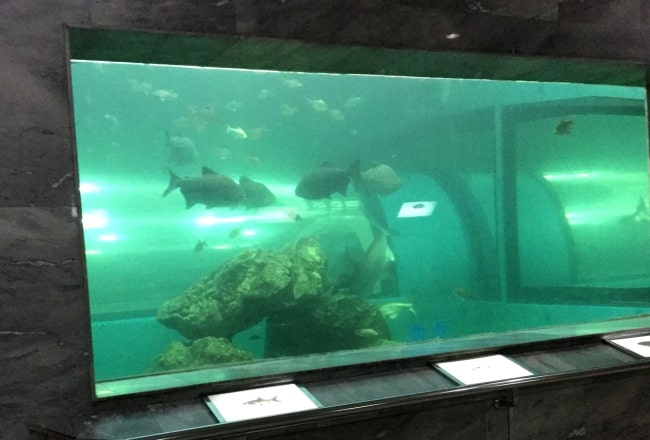
Another option for an indoor activity is the Mueang Municipality Aquarium. This aquarium is free and right next to the Somdet Phra Srinakarindra Park, making it the perfect place to stop with the family. You could easily spend a few hours there peering into the aquarium’s 24 small tanks. The highlight of the aquarium is the tunnel that goes under the largest tank. The tunnel gives the exciting illusion that you are under the water among the marine life. The aquarium is open Wednesday to Sunday from 8:30am to 4:30pm, and admission is free.
4. Wat Pha Nam Yoi
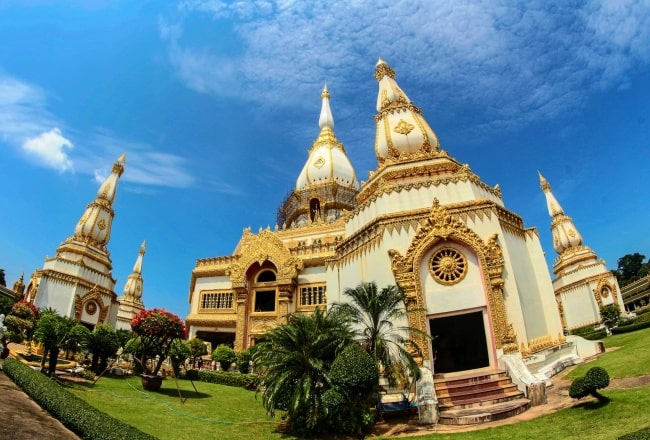
Roi Et has multiple temples within and surrounding the city, each with their own unique environment and appearance. While you would be hard pressed to visit all of them, the three mentioned here are among the most interesting and unique and should be added to the itinerary on a visit to Roi Et. The most impressive is Wat Pha Nam Yoi, a large and exquisite monastery in the countryside. The name of the temple translates to “cliff,” which describes the terrain the temple is situated upon. It can be seen for miles; however, since it’s off the beaten tourist track, most of the visitors you will see are locals. If you drive to the temple, there is parking at the foot of the hill and you are saved a climb by a bus that runs up to the temple.
Once you’re there, take a moment to take in the view of the valley below. The temple’s courtyard contains beautiful green gardens, which are perfectly manicured to surround the paths and ponds within it. The building of the temple itself is simply magnificent. It is white and red and accented with intricate gold trim. There is also extensive gold plating on the inside of the temple, highlighting the monastery’s revered status. The temple has several floors, but taking the stairs up to the top is well worth it. The top floor contains sacred relics of the Buddha and is decorated with ancient and contemporary art. Wat Pha Nam Yoi has one of Thailand’s largest chedi’s, or pagodas, and the finial on top is made of pure gold. The temple has no admission price and a tip is to visit in the morning, as soon as it opens at 6:30am, to get a glimpse of it bathed in the spectacular morning light.
5. Wat Klang Ming Mueang
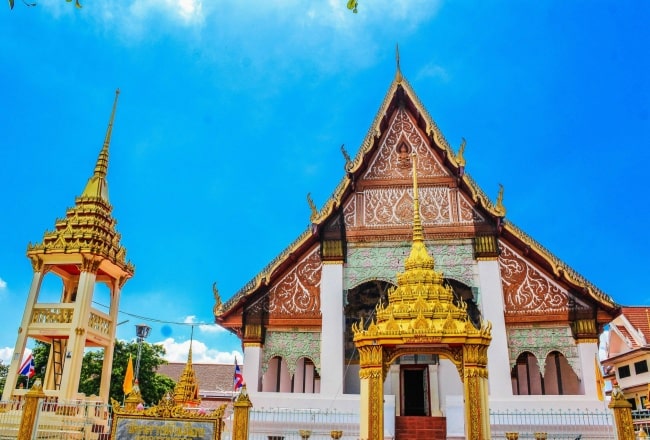
If you’re unable to venture out of Roi Et, there are still several interesting temples to see inside the city. Wat Klang Ming Mueang is a very old monastery, outdating the city’s foundation. It is located in the city center on a small hill. Inside the temple, the walls of the ordination hall inside contain beautiful murals showing the life of the Buddha. The complex also has a tower structure. Previously the building was used as a location for civil servants to take an oath of loyalty to the king; today it is used as a Buddhist school and faith exams are held there annually. Admission to this historic temple is free and it welcomes visitors from 6am-5pm.
6. Wat Buraphaphiram
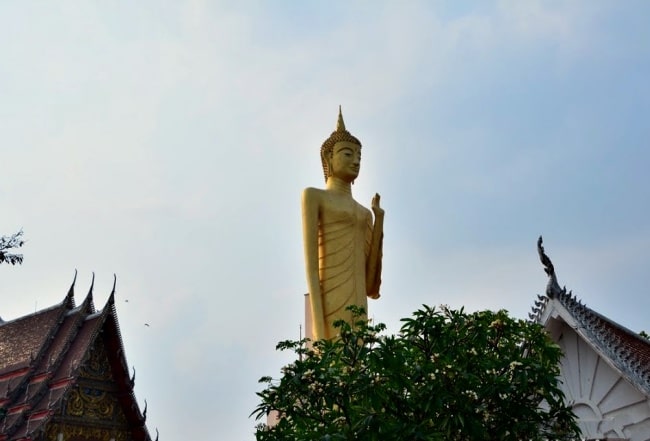
Wat Buraphaphiram is another monastery in Roi Et. It is known for containing Thailand’s tallest standing Buddha statue. There are several museum rooms around the foot of the statue where visitors can learn more about the temple’s history. It was the third class royal temple. Today, it is highly revered in the province and many come to visit.
7. Bun Khao Chi Festival
In the Isaan culture of northeastern Thailand, twelve festivals are held throughout the year, one during each month. This gives travelers to this region many opportunities to experience the excitement of the accompanying parades, festivals, and music! The Bun Khao Chi festival is held in February and is one of a number of festivals held at this time across the province to celebrate the harvest. The feature of Bun Khao Chi is grilled sticky rice, the traditional dish of the same name. According to Buddhist faith, a servant offered the dessert dish called khanom paeng chi to the Buddha, even though she thought he would not eat it because it was not good enough. However, he did eat it and then preached to her until she reached the first stage of enlightenment. Ultimately, the story is about giving, an important virtue in Buddhist faith. The belief that making grilled sticky rice will gain merit for the people is what inspires the festival, which also features a parade, a beauty competition, and a Khao Chi cake competition.
8. Kin Khao Pun Bun Phawet Festival
This festival takes place in March at the Somdet Phra Srinakarindra Park and Bueng Phalan Chai lake. It is a Buddhist ceremony in which the monks give a sermon. The sermon contains all the chapters of the Vessantara Jataka, the Great Birth Sermon. There are thirteen chapters in the sermon, and a parade is held for each one. The featured traditional food of the festival is Khao Pun rice noodles. Traditional arts are another big part of the festival and contests are held to determine the best artisan.
9. Bun Bangfai Festival
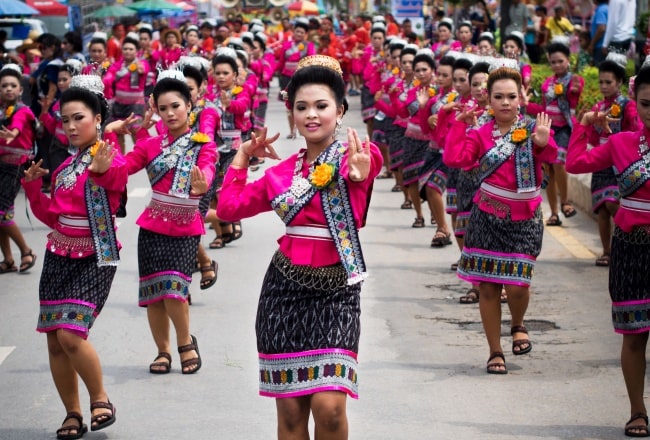
One of the most exciting festivals in Roi Et is the Bun Bangfai Festival, or the rocket festival, which is held in June. As the name implies, the features of the festival are colorful rockets. They are paraded through the streets of Roi Et, and each district of the province organizes a parade. The parades also feature traditional dancing and music, food carts, and activities for children. The highlight of the festival is when the rockets are launched. However, don’t expect a colorful display like fireworks. The intent of these rockets is to go as high as possible in the sky. This is believed to gain merit for the upcoming harvest and for good rain. Understandably, this festival attracts many visitors from the surrounding province.
10. Buddhist Lent Candle Procession
The Buddhist Lent Candle Procession is held at the beginning of Buddhist Lent, on Asanha Bucha Day in July. During the upcoming three month period, monks will go to their temple for contemplative study, prayer, and meditation. They are given small candles and other essentials for their time in solitude. A competition is held for the most beautifully carved candle. The monks are given quite a send off, with parades featuring traditional dances and cultural performances. Temples will decorate their floats with flowers and intricate wax sculptures in the hopes of winning the award for best float.









